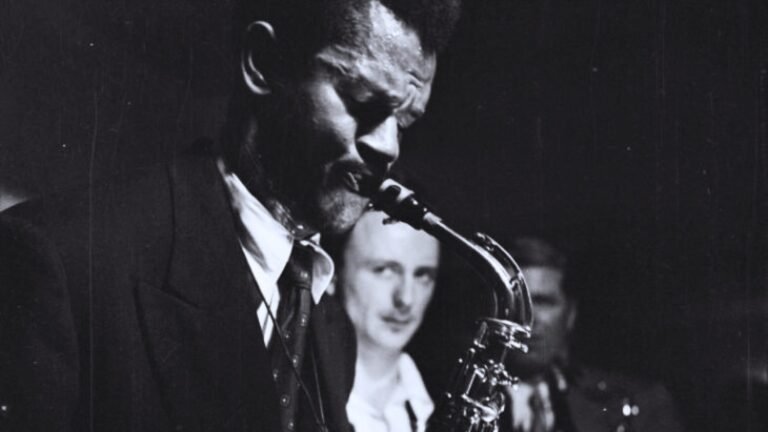Born Joseph Arthurlin Harriott on 15 July 1928 in Kingston, Jamaica, Joe Harriott was a visionary saxophonist, composer and pioneer whose contribution to jazz stays underappreciated, regardless of his improvements shaping the style in profound methods. From the halls of the Alpha Boys College to the golf equipment of London, Harriott’s musical journey was certainly one of brilliance, daring experimentation and, tragically, quiet neglect.
A Sound Formed by Jamaica
Harriott’s first instrument was the clarinet, which he realized on the Alpha Boys School (now Alp[ha Institute)—an institution known for producing generations of musical legends. He later transitioned to the baritone and tenor saxophone before settling on the alto, which became his signature voice. His early experiences playing in Jamaican dance bands infused his style with the rhythms of mento and calypso, giving his music a distinct Caribbean flavour that would continue to echo through his most avant-garde work.
In 1951, Harriott moved to the UK as part of Ossie Da Costa’s band. The group eventually returned home, but Harriott chose to stay, quickly making a name for himself in London’s jazz scene. Sitting in at the Feldman Club on Oxford Street, his fiery bebop style turned heads, and soon he was playing with the likes of Tony Kinsey, Ronnie Scott and Phil Seamen.
Bebop Virtuoso Turned Trailblazer
Although he was initially seen as a bebopper within the vein of Charlie Parker, Harriott solid his personal musical path. His early recordings—Southern Horizons, Free Kind—showcased his lyrical improvisation and unorthodox phrasing, steeped within the blues however filtered by means of a uniquely Caribbean sensibility. But it surely was his radical shift within the Sixties that will cement his place in jazz historical past.
Whereas recovering from tuberculosis in hospital in 1959, Harriott started to rethink the very construction of jazz. The consequence was his personal tackle “free-form” music—distinct from the American improvements of Ornette Coleman. His method prioritised collective improvisation over soloing, making a dynamic, ever-shifting musical dialogue amongst his bandmates. “What we attempt to do is to color sounds… colors and results,” he defined in a uncommon interview, capturing the essence of his radical imaginative and prescient.
Albums like Free Kind (1960), Summary (1962), and Motion (1963) broke new floor. Summary earned a uncommon five-star evaluate from DownBeat journal, the primary ever for a British jazz report. Harriott’s compositions, together with Coda and Beams, blended mental rigour with searing emotion, incomes the admiration of friends like Charles Mingus—even when mainstream recognition remained elusive.
Indo-Jazz and World Fusions
By no means content material to remain inside boundaries, Harriott went on to co-create one of many earliest East-West musical collaborations with Indian violinist John Mayer. Their Indo-Jazz Fusions albums, starting in 1966, paired Indian classical musicians with jazz gamers in a pioneering “double quintet.” These experiments, predating the time period “world music” by a long time, revealed Harriott’s relentless curiosity and perception within the universality of music.
Different collaborations—such because the album Hum-Dono with guitarist Amancio D’Silva—additional highlighted Harriott’s openness to genre-blending and his potential to seamlessly adapt with out ever dropping his voice.
A Lifetime of Genius, A Demise in Obscurity
Regardless of his formidable expertise, Harriott spent his closing years in hardship. As jazz gave technique to rock and pop, efficiency alternatives dried up. He endured lengthy durations of unemployment and sick well being, and by the early Nineteen Seventies was dwelling in close to destitution. “I used to be a bit early it appears. Perhaps if I may change my title and exit and play the identical issues as ten years in the past, I’d make cash. Maybe the general public wasn’t ready for it then, however would possibly take it higher now,” he mirrored in a 1971 interview.
Harriott died of most cancers on 2 January 1973 in Southampton, aged simply 44. His headstone bears a defiant reminder of his brilliance: “Parker? There’s them over right here can play a couple of aces too.”
A Legacy Reclaimed
In life, Harriott’s music was too forward-thinking for the institution and too “colonial” for the celeb standing afforded to American jazzmen. He was a Caribbean genius working in a Britain that wasn’t able to embrace Black excellence by itself phrases. However time has vindicated him.
At present, his affect will be heard within the work of British jazz artists like Courtney Pine, Soweto Kinch, and Gary Crosby. Kinch, who paid tribute to Harriott in stay performances, referred to as him “an important British jazzman we uncared for for too lengthy.”
Current reissues of Free Kind, Summary, and Indo-Jazz Fusions have launched Harriott’s music to new audiences. His story is more and more recognised as central to the event of British jazz—and an important chapter within the world story of innovation, migration, and musical daring.
As we keep in mind Joe Harriott on what would have been his 96th birthday, we rejoice not only a saxophonist of beautiful talent, however a visionary whose time is lastly coming. His music, as soon as sidelined, now stands as a testomony to a person who painted with sound and by no means stopped reaching past the bizarre.

